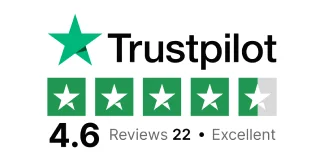Suppose you’re building a startup in Germany or the Netherlands. In that case, you already know the challenge: the idea is solid, maybe even tested, but hiring developers for startups who are affordable, available, and aligned with your pace? That’s the real bottleneck.
It’s no secret that the local tech talent pool is stretched thin and expensive. For early-stage founders, the decision of how to hire developers for your startup isn’t just a hiring issue; it’s a strategic one.
So, what’s actually working in 2025 for agile, product-driven startups in the EU? Let’s explore the developers hiring models that matter and why more European startups are turning to dedicated remote developers from India as a serious, sustainable solution.
Why Traditional Hiring in Germany & the Netherlands Isn’t Startup-Friendly
Startups move fast, but traditional hiring doesn’t. On average, hiring a full-time developer in Germany or the Netherlands takes 2 to 5 months, and that’s if you can even find the right talent.
Even then, salaries for skilled developers are rising. A senior full-stack developer in Berlin or Amsterdam can cost €80,000–€120,000 annually, not including benefits, taxes, and overhead.
According to the European Commission, 42% of EU-based SMEs cite tech talent scarcity as a major barrier to innovation. That’s not just a stat, that’s your reality if you're trying to build and launch an MVP.
When you’re looking to hire developers for a startup, those delays and costs can kill momentum. That’s where the right hiring model becomes your secret weapon.
Developer Hiring Models: Your Three Main Options
Most founders explore one of these hiring paths. Each has trade-offs, especially in the context of early-stage needs.
1. In-House Hiring
This is the traditional route: full-time, local employees on payroll.
- Pros: Strong culture fit, control, local market familiarity.
- Cons: High costs, slow hiring, limited talent pool.
2. Freelancers / Gig Platforms
Good for small tasks or emergency fixes, not ideal for core product development.
- Pros: Flexible, low-commitment, fast to onboard.
- Cons: Inconsistent output, lack of ownership, coordination headaches.
3. Dedicated Remote Developers (India, Eastern Europe, LATAM)
This model is growing fast, especially among EU startups.
- Pros: Pre-vetted, reliable, cost-effective, timezone-compatible teams.
- Cons: Needs good management and communication structure (which is easier than you think).
Why Dedicated Indian Developers Make Business Sense (Now More Than Ever)
Let’s address the elephant in the room: why India?
It’s not just about cost savings (though that helps). It’s about quality + startup-readiness. India is home to over 5 million software developers, many of whom are trained in agile, fluent in English, and experienced in building MVPs for European clients.
At WebOConnect, we’ve worked with several founders from Berlin to Utrecht who were initially skeptical, but after one sprint, became full believers.
Here’s why dedicated resources from India are thriving:
- Affordability without sacrificing skill.
- A culture of ownership and long-term collaboration.
- Our developers do not just write code, but ship value.
- Time-zone alignment, we work as per your requirement.
- Pre-vetted developers with various experience levels to choose from.
- Clear milestone setting from the very start, so that you know what to expect and when to expect.
- Responsive team for all your queries and questions, just like your own extension.
Case Studies: Real Work That We're Proud Of
Qoach.io (Revolution in Coaching Marketplace)
A coaching marketplace where users can get a coach by telling their actual problem. No more finding coaches by genre and specialities. But a step ahead, where you type your problem and our AI-based matchmaker finds you the real fits based on your needs and their experiences.
Also, coaches can enroll with Qoach.io and share their valuable insights via feed to let people searching for them know about their wisdom.
WebOConnect’s dedicated team made this happen live in weeks and still performed add-ons as required.
Everything went on time and smoothly, without any complexity or concerns from the client.
Terp2Go (Assistive Tech - because inclusivity is what we all deserve!)
An educational institute hired us to develop a SaaS platform where inclusivity is the priority. This platform was made for deaf and hard-of-hearing individuals to let them consume content they generally cannot.
An organization can assign an interpreter who then converts all kinds of content that they are assigned into American Sign Language. Now, whoever the organization wants can access the content just by logging in.
To explore more examples, visit our case study page.
Expert Tips for Managing Remote Indian Developers
You don’t need to micromanage to make this model work. Here’s how to make the most of it:
Start With a 3-day Free Trial
Before full commitment, get a 3-day free trial. It reveals technical skill, response time, and communication habits.
Align Timezones Smartly
We work in alignment with you as per your working hours needs.
Over-Communicate, Then Relax
Use Slack, ClickUp/Jira, Loom, and Google Meet. Establish async updates. Once you have rhythm, the team runs itself.
Clear Milestones, Actual Results
The best developer hiring models rely on clarity. Define tasks, deliverables, and timelines clearly from Day 1.
When to Use Remote Developers vs Build In-House
Here’s a helpful decision table based on your startup stage:
|
Stage
|
Recommended Model
|
Why It Works
|
|
MVP / Pre-seed
|
Hire dedicated developers from India
|
Fast, affordable, flexible, agile
|
|
Post-seed scaling
|
Hybrid (core team + remote developers)
|
Stable yet nimble, scalable
|
|
Series A / Expansion
|
Begin building a full in-house team
|
Focus on long-term culture and retention
|
| |
|
|
Remember: you’re not choosing remote instead of in-house — you’re choosing remote until in-house makes sense.
So, What’s the Best Way to Hire Developers for Your Startup?
If you’re in Germany or the Netherlands and trying to move fast with limited capital, hiring dedicated remote developers, especially from India, is one of the smartest moves you can make.
Why?
- You access skilled developers who’ve worked with startups before.
- You avoid the slow, expensive European hiring cycle.
- You stay focused on growth, while your devs stay focused on shipping.
Whether you're building the next big thing in healthtech, edtech, or SaaS, your hiring model should support your startup stage, not slow it down.
Final Thoughts: Flexibility Is the Real Hiring Advantage
In 2025, rigid org structures and bloated in-house teams are out. Smart, flexible execution is in.
Choosing the right developer hiring model means balancing quality, speed, and cost. For most early-stage startups in the EU, remote developers in Europe or India give you the leverage to move quickly without burning through your capital.
Don’t wait three months to make your first hire. Don’t overspend before product-market fit. Instead, start smart, stay lean, and build with developers who care about your outcome, not just your hourly rate.
FAQs
Q: How much does it cost to hire a developer?
Hiring dedicated developers for startups costs differently for everyone, depending on the project and other requirements. One can use WebOConnect’s calculator to find out the average cost. Simply, you can enter your requirements from drop-downs available, such as selecting language, experience, no of developers, kind of model you prefer, etc. To get a personalized quotation, one can always book a free consultation call with us.
Why does a startup need dedicated developers?
Hiring dedicated developers is way easier than hiring an in-house team or scaling your in-house team. There are various hiring models for developers for startups, but hiring dedicated resources is way more cost-effective, responsive, and needs no training at all. At WebOConnect, you will get a minimum of 6 months of experienced professionals with the option to add project managers and testers too.
Which place is the best for hiring developers for startups?
In recent times, India has risen as a superpower. Dedicated developers in India are meeting global standards, along with adding value to the product. Not only for coding but to bring your vision to life, Indian developers are innovative and quick to produce solutions your startups need. WebOConnect provides you with pre-vetted developers, works in time zone alignment, and provides you with the best tech stack offering scalability.
How can I hire a developer for a startup in India?
Hiring dedicated developers from India is comparatively easy these days. All you need to do is search for reputed brands like WebOConnect that fulfill your needs and provide you with benefits that can help your startup scale effortlessly as per your budget. Start with a checklist of what you need. Find out the brands that are collaborative and seem fulfilling. Get deeper insights using the portfolio of the brands providing the services you need. Here is WebOConnect’s portfolio for your reference.

_thumb.webp)
_thumb.webp)
_thumb.webp)

_thumb.webp)













